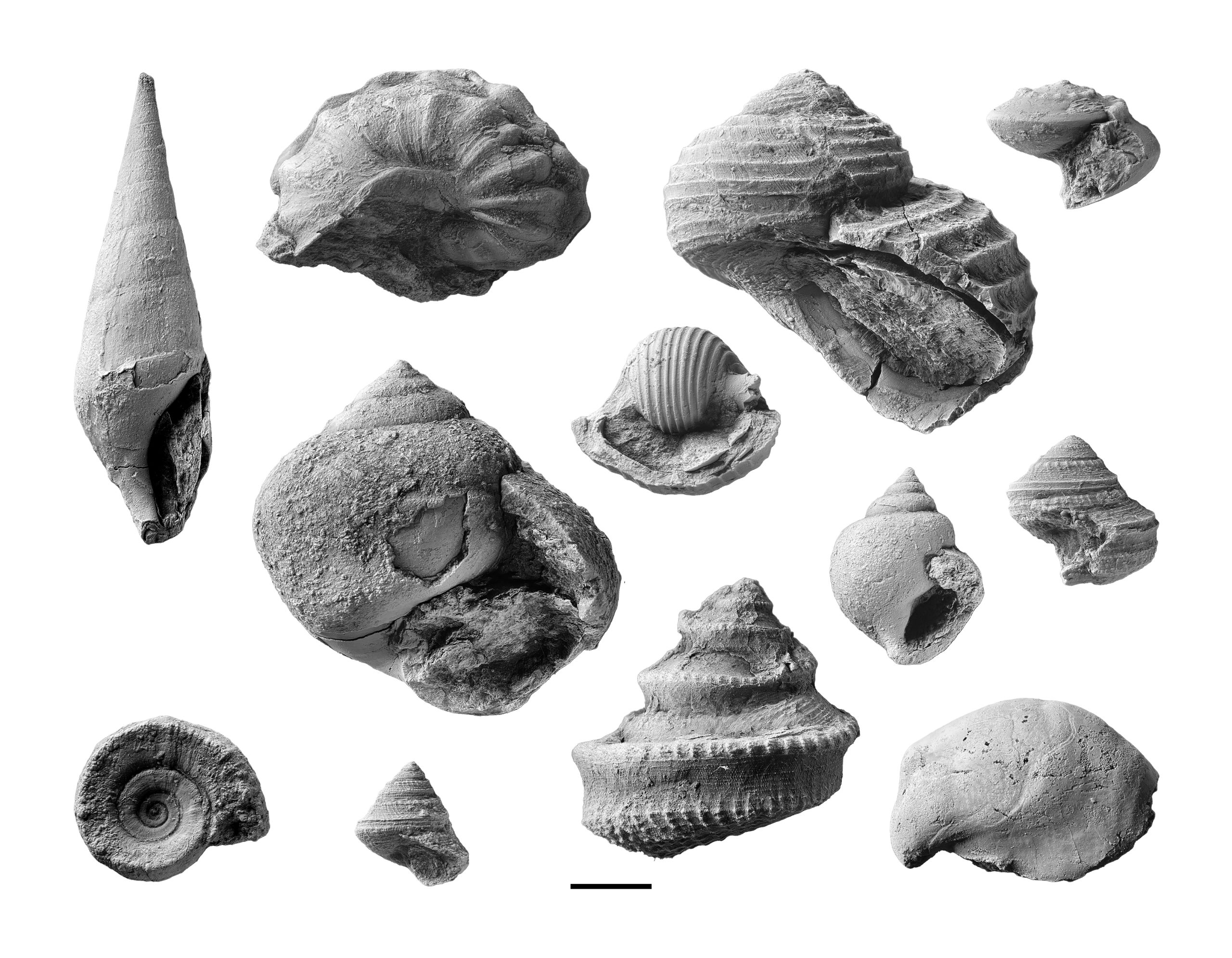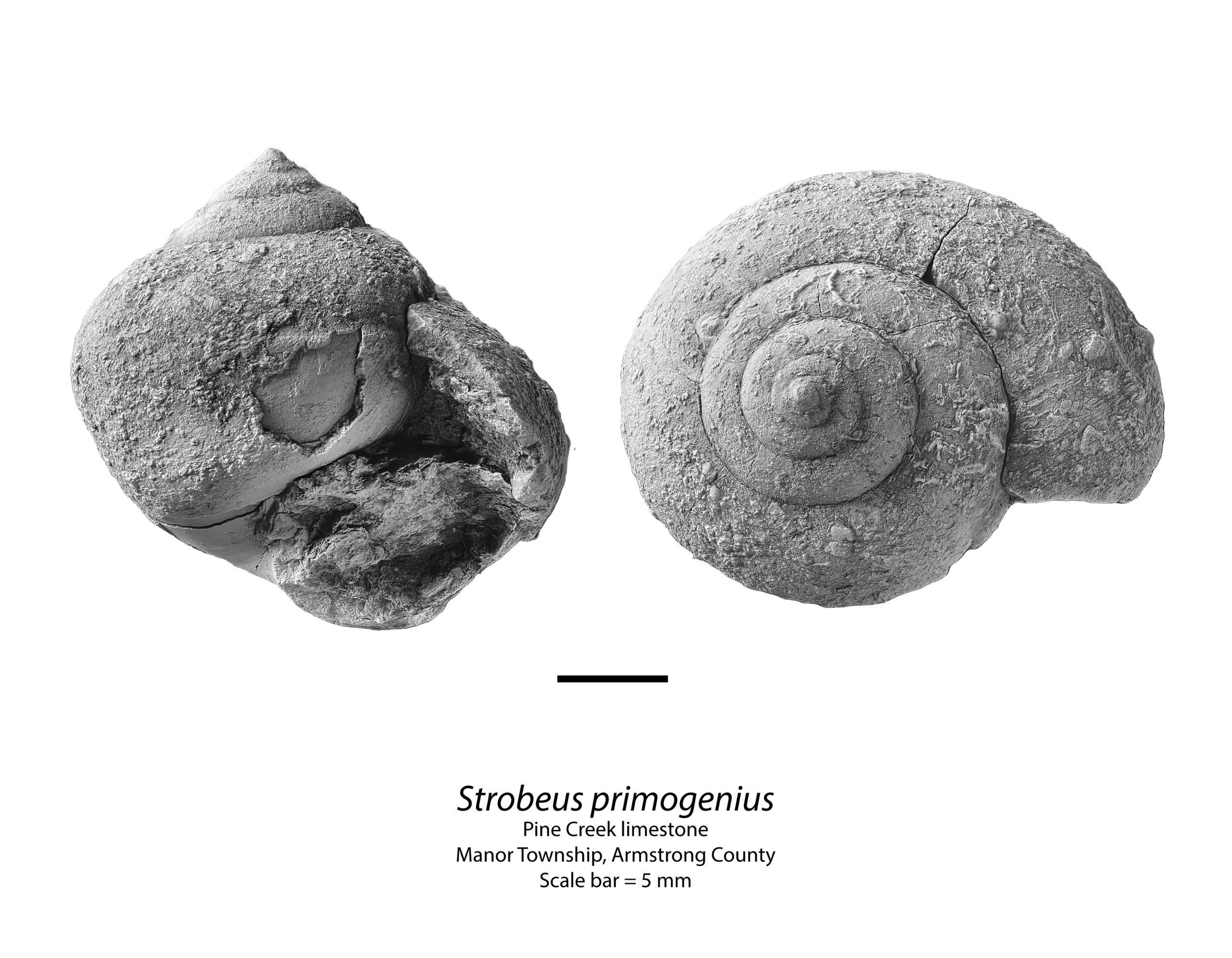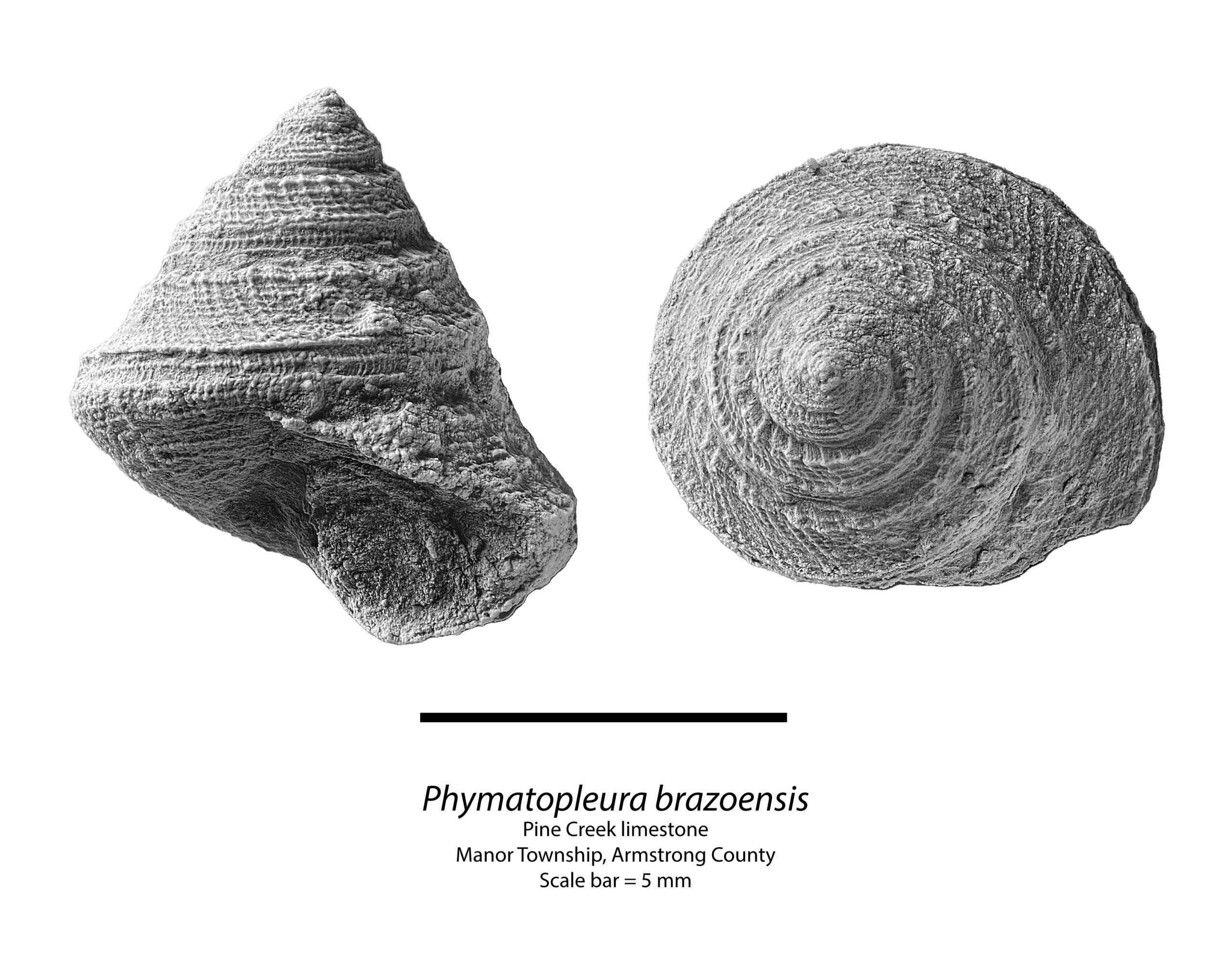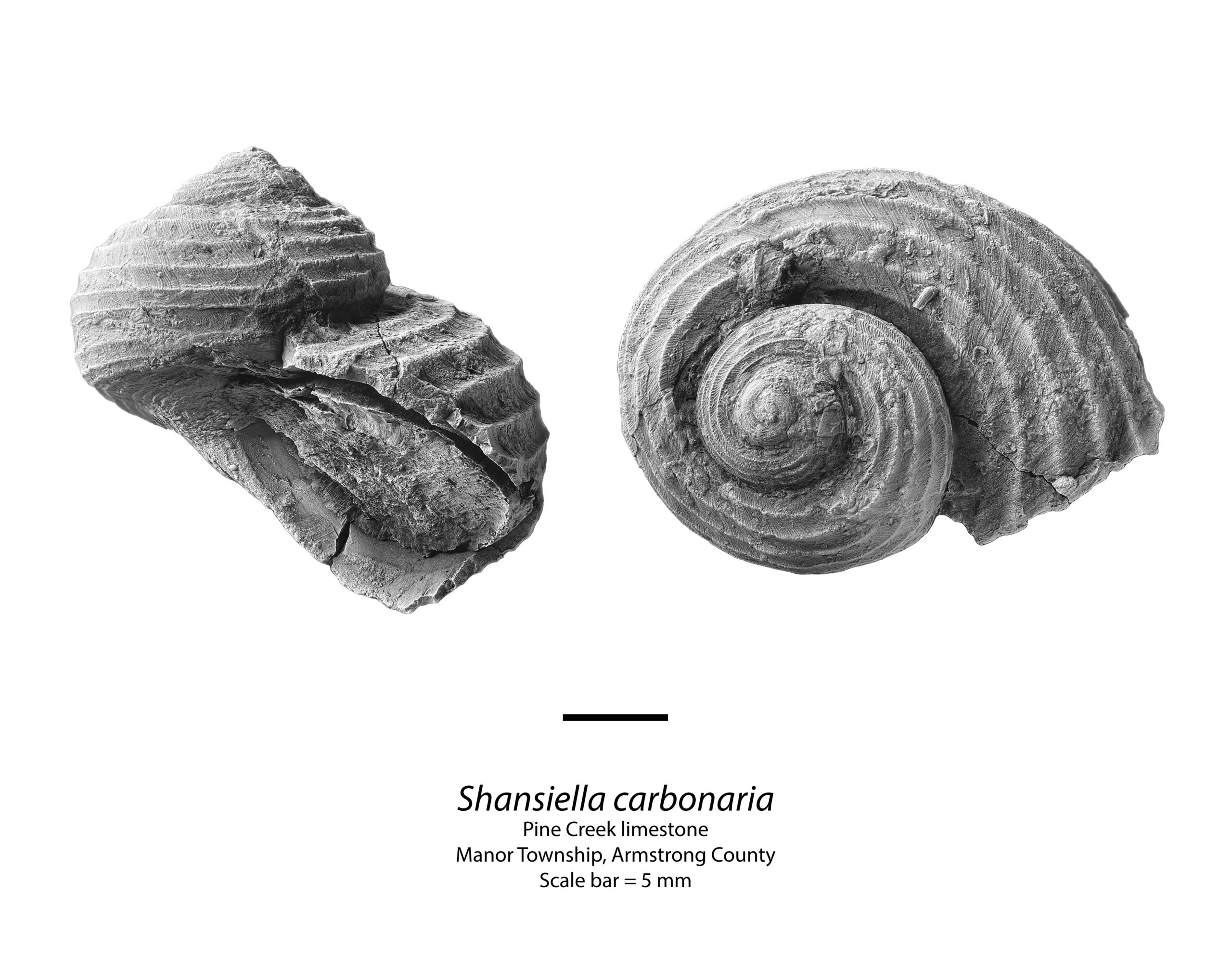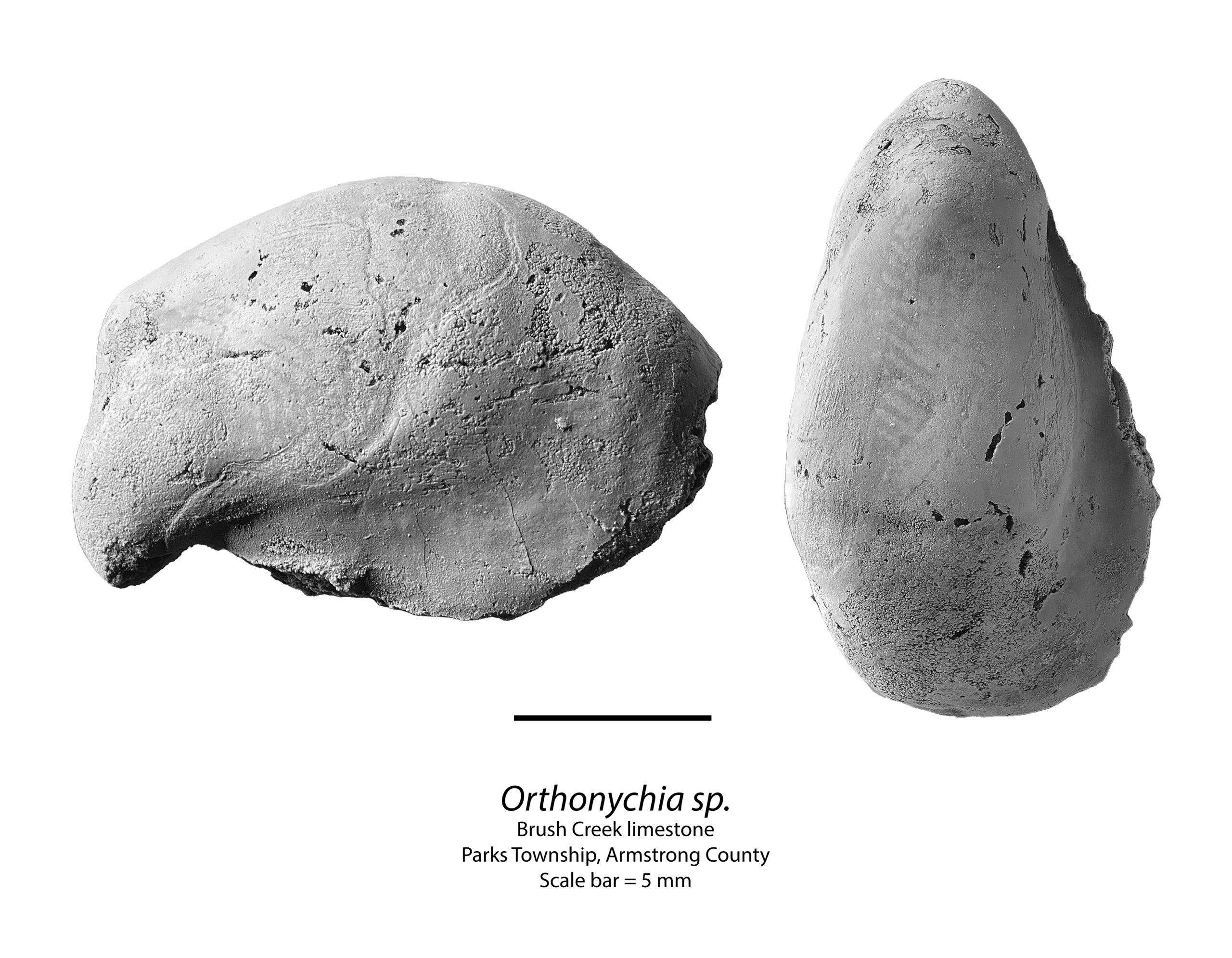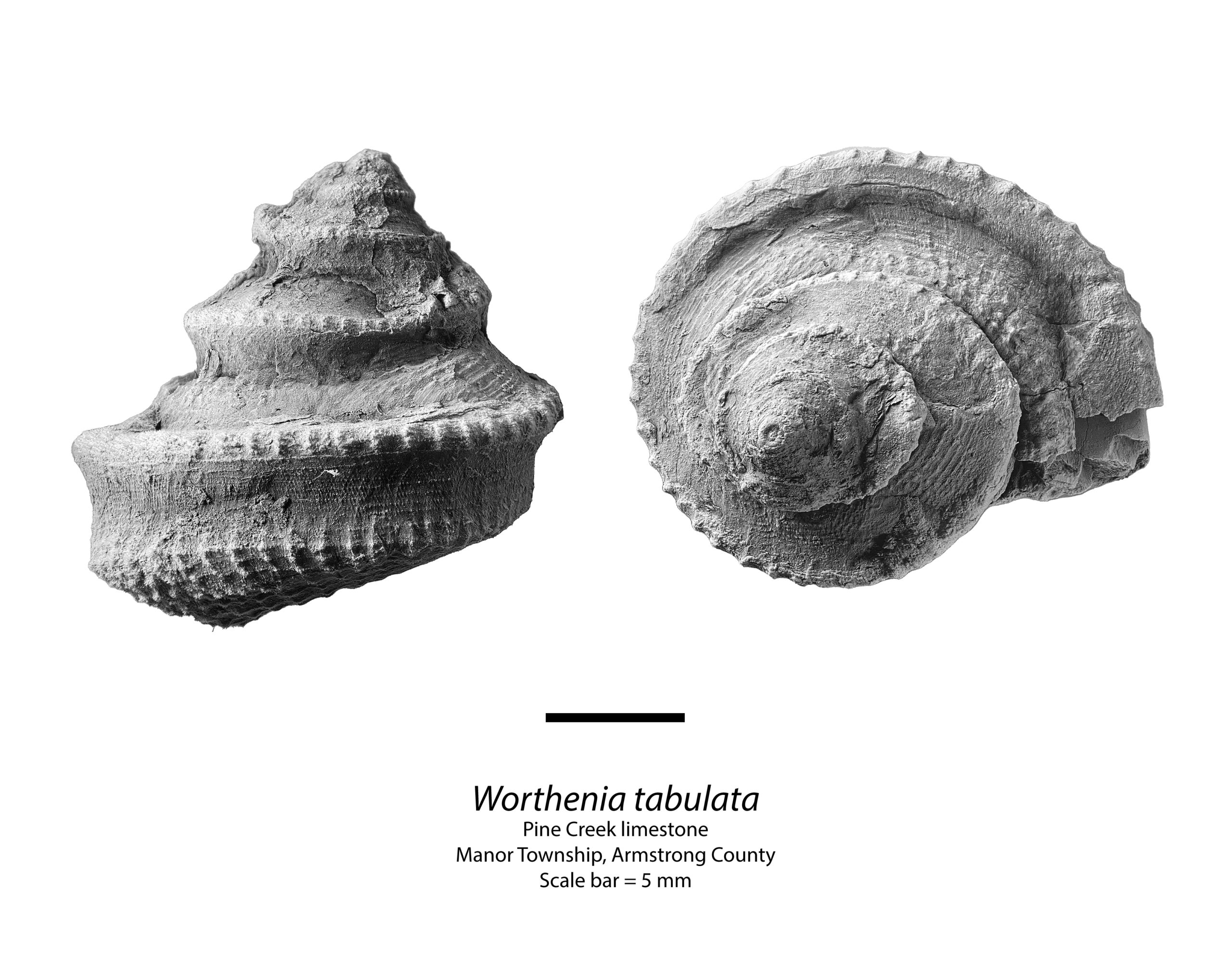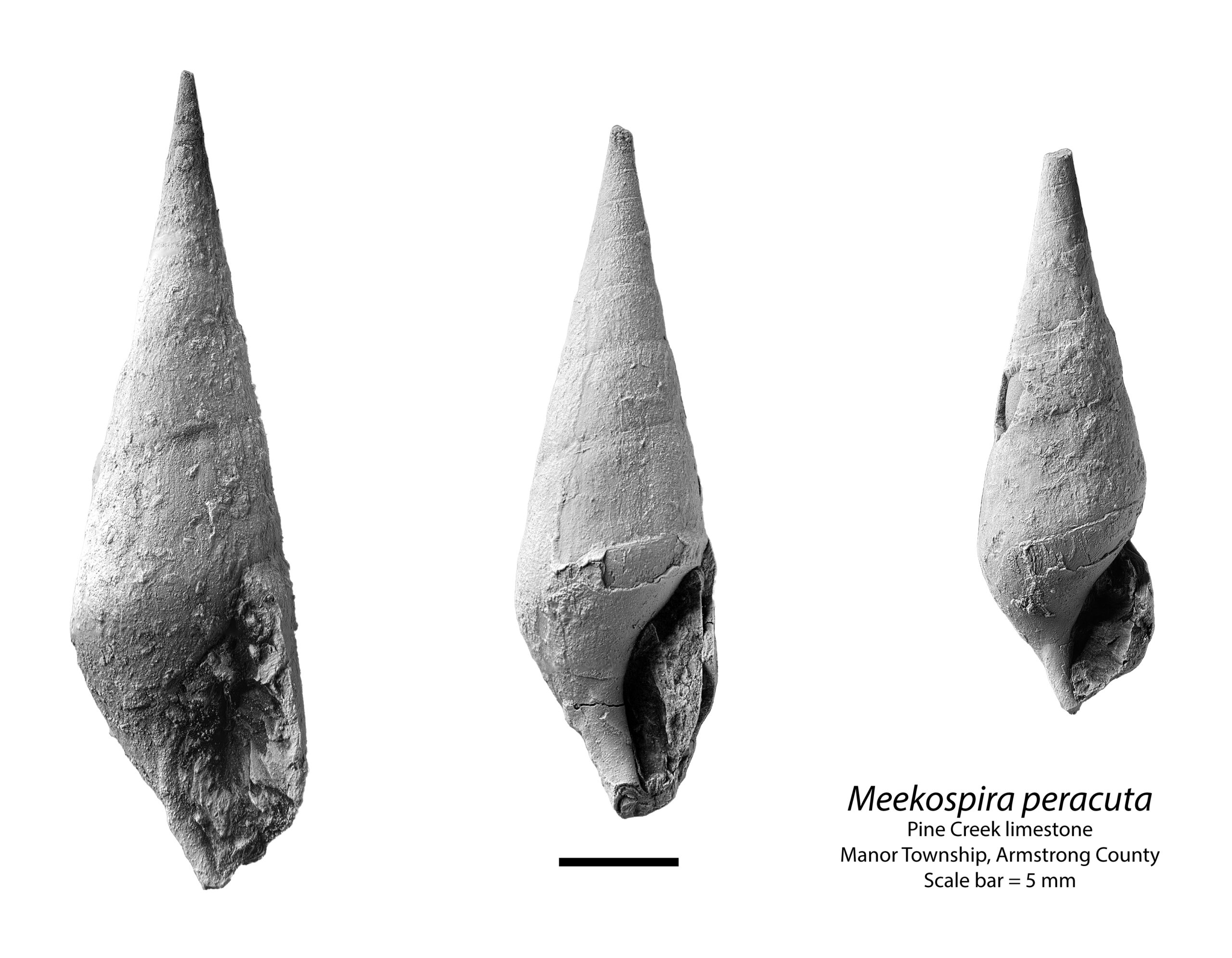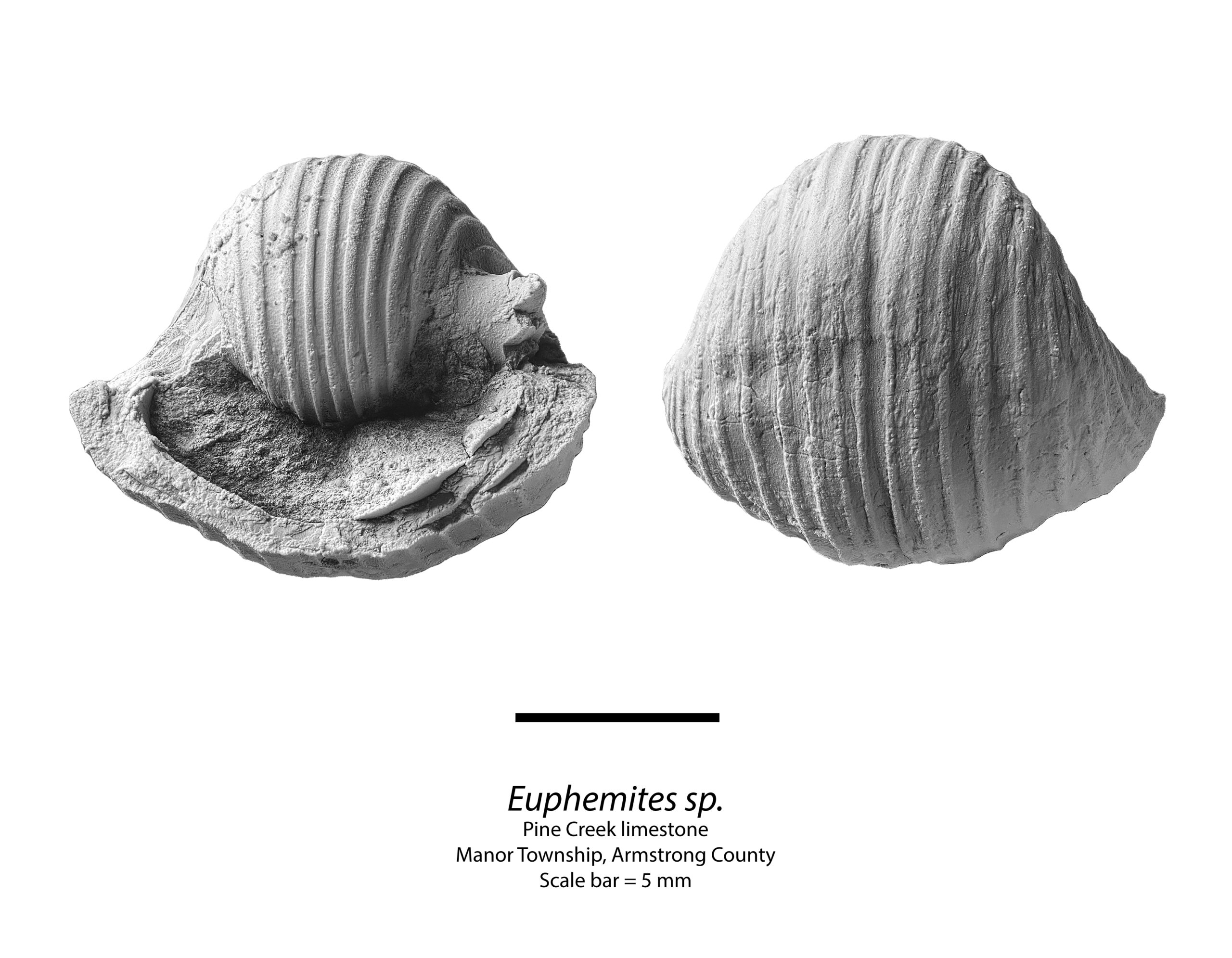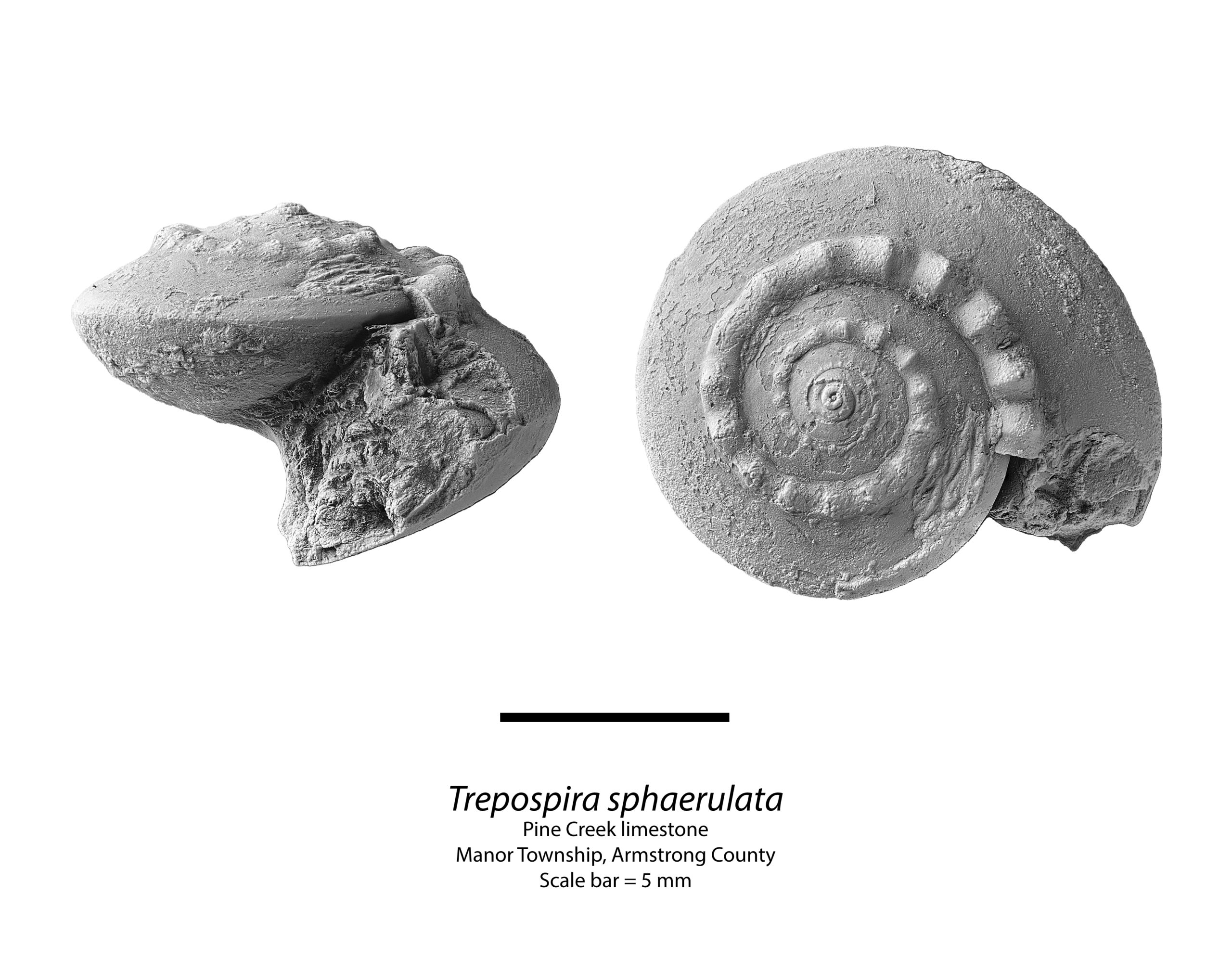For 2023, I produced a twelve-month calendar featuring twelve genera of gastropods collected from rocks in Armstrong County, Pennsylvania. The calendar wasn’t a big seller, I sold it at cost via LuLu and gifted several copies to friends in the paleontology community.
Calendar Back Panel Text
The Glenshaw Formation in Western Pennsylvania consists of rocks deposited during a small portion of the late Carboniferous Period (the Pennsylvanian). As the Glenshaw formed, a sea would periodically flood the area, thought to be due to the Earth’s warming. While under seawater, relatively thin limestone rocks formed, capturing the remains of many types of fauna, including gastropods. The waters would recede as glaciers formed due to climate cooling, and the cycle would start over again. The Glenshaw records many such cycles. It took over three million years for the various layers of rocks of the Glenshaw Formation to deposit.
The twelve genera shown in this calendar are not the only gastropods found in the Glenshaw Formation in Armstrong County, but they are some of the more common. The collection of all specimens happened over the past three years, mostly recovered from a highway exit in central Armstrong County, Pennsylvania. Fortunately, the Pine Creek limestone at the location produces easy-to-recover fossils, making the Brush Creek limestone in nearby Parks Township a less preferred place to collect, especially when targeting gastropods.
This past year I learned how to use heated ammonium chloride to produce photos. First, I coated the specimens using the vapor created by heating ammonium chloride. This process helps the textural details of the fossil stand out in photographs. Next, I placed the coated specimens under an inspection microscope lens. I took stacks of photos at different focal planes (using an iPhone) and later recombined them into a single image with software. This method produced the pictures seen in this calendar. Most needed to be reduced in size to fit on the calendar pages—larger specimens required as many as four sets of photos to capture everything.
This calendar showcases a single gastropod genus for each month. All are single specimens; the exception is Meekospira, a collage of three separate specimens. Workers had known some of these as far back as 1835 when Timothy Abbot Conrad identified new fossils from the Brush Creek limestone exposed during the historic Allegheny Portage Railroad construction.
Calendar Photos
The following twelve photos were featured in the calendar.


Cover Photo

Authors
Genera
- Amphiscapha Knight 1942
- Euphemites Warthin 1930
- Glabrocingulum Thomas 1940
- Worthenia de Koninck 1883
- Meekospira Ulrich and Scofield 1897
- Phymatopleura Girty 1939
- Shansiella Yin 1932
- Leptoptygma Knight 1936
- Orthonychia Hall 1843
- Pharkidonotus Girty 1912
- Strobeus de Koninck 1881
- Trepospira Ulrich and Scofield 1897
Species
Note that Conrad is the author of half of the species listed below.
- Amphiscapha catilloides (Conrad 1842)
- Glabrocingulum grayvillense (Norwood and Pratten 1855)
- Worthenia tabulata (Conrad 1835)
- Meekospira peracuta (Meek and Worthen 1860)
- Phymatopleura brazoensis (Shumard 1860)
- Shansiella carbonaria (Norwood and Pratten 1855)
- Leptoptygma simplex (Knight 1931)
- Pharkidonotus percarinatus (Conrad 1842)
- Strobeus primogenius (Conrad, 1835)
- Trepospira sphaerulata (Conrad 1842)
References
- Conrad, T.A., 1835, Description of five new species of fossil shells in the collection presented by Mr. Edward Miller to the Geological Society. Transactions of the Geological Society of Pennsylvania 1(1):267-270
- Conrad, T.A., 1842, Observations on the Silurian and Devonian systems of the United States, with descriptions of new organic remains. Journal of the Academy of Natural Sciences of Philadelphia 8(2):228-280
- Girty, G.H., 1912, On some new genera and species of Pennsylvanian fossils from the Wewoka Formation of Oklahoma. Annals of the New York Academy of Sciences 21(2):119-156
- Girty, G.H., 1939, Certain pleurotomariid gastropods from the Carboniferous of New Mexico and Texas. Journal of the Washington Academy of Sciences 29(1):21-36
- Hall, J., 1843, Geology of New York. Part IV, comprising the survey of the fourth geological district. Natural History of New York 4:1-683
- Knight, J.B., 1931, The gastropods of the St. Louis, Missouri, Pennsylvanian outlier: the Subulitidae. Journal of Paleontology 5(3):177-229
- Knight, J.B., 1942, Four new genera of Paleozoic Gastropoda. Journal of Paleontology 16(4):487-488
- de Koninck, L.G., 1881, Faune du calcaire carbonifère de la Belgique, 3e partie, Gastéropodes. Musée Royale d’Historie Naturelle Belgique Annales, Série Paléontoloque 6:1-170
- de Koninck, L.G., 1883, Faune du calcaire carbonifère de la Belgique, 4e partie, Gastéropodes (suite en fin). Musée Royale d’Historie Naturelle Belgique Annales, Série Paléontoloque 8:1-240
- Meek, F.B., and Worthen, A.H., 1860, Description of new Carboniferous fossils from Illinois and other western states. Proceedings of the Academy of Natural Sciences of Philadelphia 12:447-472
- Norwood, J.G., and Pratten, H., 1855, Notice of fossils from the Carboniferous Series of the western states belonging to the genera Spirifer, Bellerophon, Pleurotomaria, Macrocheilus, Natica, and Loxonema, with descriptions of eight new characteristic species. Journal of the Academy of Natural Sciences of Philadelphia 3:71-77
- Shumard, B.F., 1860, Descriptions of five new species of Gastropoda from the Coal Measures and a brachiopod from the Potsdam sandstone of Texas. Academy of Science of St. Louis Transactions 1:624-627
- Thomas, E.G., 1940, Revision of the Scottish Carboniferous Pleurotomariidae. Transactions of the Geological Society of Glasgow 20:30-72
- Ulrich, E.O., and Scofield, W.H., 1897, The Lower Silurian Gastropoda of Minnesota. The Paleontology of Minnesota 39(2):813-1081
- Warthin, A.S., 1930, Micropaleontology of the Wetumka, Wewoka, and Holdenville formations. Oklahoma Geological Survey Bulletin 53
- Yin, T.H., 1932, Gastropoda of the Penchi and Taiyuan Series of North China. Palaeontologica Sinica, Series B 11(2):1-53

